“Relieving stress is an essential part of being a caregiver, especially for someone who has a life-changing disease like dementia,” says Michelle Pelham, Executive Director at Bridges® by EPOCH at Nashua, a Memory Care Assisted Living community in Nashua, NH. “Although we talk a lot about doing things like taking a break, asking for help or connecting with friends and family, there are also many great stress relief practices that you can do on a daily – or more often – basis.”
Stress relief practices can be very helpful, says Michelle, because they don’t have to take very long and you don’t need to go anywhere special or use special equipment. “These practices are very in-the-moment, which is good for a busy caregiver who may not feel like she has the ability to get away for more than a few minutes,” she explains.
We’ve put together the top five stress relief practices that you can start doing starting today. Michelle suggests finding time in your daily routine to do one or two of them, or more if you’re so inclined. “I like to do my stress relief practices first thing when I get up and right before I go to bed because that helps put me in the mood for what I need to accomplish,” she says.
1. Breath focus.
In this technique, you take slow, long, breaths. As you slowly inhale and exhale and focus on your breathing itself, you’re able to gently disengage your mind from worries, thoughts, sensations and other external factors.
- Sit in a comfortable, quiet place. Place a hand on your chest and the other on your stomach.
- Take a slow, regular breath in through your nose. Pay attention to your hands as you breathe in. Make sure the hand on your chest is remaining still while the one on your stomach moves in time with your breathing.
- Breathe out through your mouth slowly.
- Repeat this process at least 10 times.
2. Body scan.
This technique blends the practice of breath focus with deliberate muscle relaxation to actually feel yourself de-stress.
- Find a comfortable position. You can choose to lie down or sit – whichever works better for you.
- Take a few deep belly breaths to center yourself and slow your breathing down. Make sure you’re breathing from your stomach (diaphragm) instead of your chest. If it helps, visualize your belly as a balloon that’s expanding and deflating with each breath.
- Slowly bring your awareness to your feet, observing the sensations you feel. If you feel pain, or tightness or anything else, acknowledge it and gently breathe into it (this means breathing slowly while focusing on that specific part of your body). Visualize the tension leaving your body through your breath and evaporating into the air.
- As you’re ready, slowly move upward and scan your entire body, breaking and visualizing your relaxation as you continue. Gradually work your way up through your body until you reach the top of your head.
- Finish your practice by allowing your breathing to come back to normal.
3. Guided imagery.
This practice uses mental imagery to help you relax and focus through soothing experiences, places or scenes. Some people like to use guided meditation for this practice, while some use a white noise machine that can help conjure up relaxing images (think waves on a beach). There are many free apps and videos you can use to help you get started.
- Sit or lie down in a quiet, comfortable area.
- Close your eyes and take several deep breaths. Continue these slow, deep breaths throughout your practice.
- Imagine a peaceful scene like a quiet beach, or a rainforest or any other place in nature that helps you feel relaxed.
- Imagine the details of the scene. Think about the scents, sounds and sensations you experience in this calming, peaceful place.
- Create a path in the scene in your mind. Imagine yourself walking along this path, picturing the details, sound and sensations you experience as you walk the path.
- After about 15 minutes, bring your awareness back to the present
4. Mindfulness meditation.
This technique involves bringing your mind’s attention into the present and experiencing the moment free of distracting thoughts or sensations. This practice can be done in a variety of different ways. Choose the one or ones that work best for you.
- Stop and pay attention to what’s happening to you in the moment. Clear your mind and experience your environment with each of your senses. This is something that might be easy to practice if you’re taking a walk or enjoying a favorite meal.
- Focus on your breathing. Taking a moment to clear your mind and do 10 deep belly breaths is a great way to focus your mind while also bringing attention to the stress you’re holding in your body.
- Sit quietly and comfortably for a moment, breathing in and out and focusing on the sensations of the air on your skin, the sounds you’re hearing and the smells you experience. If you find your mind drifting due to thoughts or uncomfortable physical sensations, accept them as they come and then let them go, returning your focus to your breathing.
- Similarly, you can practice a walking meditation. Find a quiet place to walk back and forth slowly, usually a small space about 10 to 20 feet in length. Some practitioners prefer to have a walking circle or dedicated path that they’ve created in a quiet spot like a garden or meditation room. Focus your entire min on the experience of walking, being aware of the sensations in your legs, your balance and the act of standing. When you reach the end of the path, turn and continue walking. Repeat for 10 to 15 minutes.
5. Repetitive prayer or inspirational phrase.
In this technique, practitioners silently repeat a short prayer or phrase while also practicing breath focus. This is an excellent method for individuals for whom religion or spirituality is meaningful.
- Find a quiet place to sit where you can focus and be free of distractions.
- Choose a prayer or phrase to focus on, preferably something that has meaning to you. Sections of Psalm 23 are popular choices. Or, you could choose a mantra such as “I Am, I Feel, I Love.”
- Begin your meditation by focusing specific words as you inhale and specific words as you exhale. As much as possible, concentrate totally on your words and your breathing, excluding all other thoughts and distractions from your mind. This will carry you into a state of stillness and grace.
- Repeat this for as long as you want. After you’ve finished, allow yourself to sit quietly and allow your breathing and awareness to return to you.
Try each of these techniques to see which one – or ones – work best and resonate with you. Although even just a few minutes a day can be beneficial, try to practice for at least 20 minutes a day. The longer and more often you’re able to utilize these relaxation techniques, the more stress you’ll be able to relieve and the greater the benefits you’ll reap.
A Fulfilling Lifestyle
Bridges® by EPOCH at Nashua provides expert memory care within an assisted living environment that is comfortable, positive and engaging. Exclusively dedicated to caring for those with Alzheimer’s disease and other forms of dementia, our community offers a wellness-focused lifestyle that promotes dignity, independence and fulfilment in daily life.
Dedicated Memory Care
Our programs, care and services are all designed to celebrate our residents’ lives and support each resident’s individual strengths and abilities. No matter what stage of memory loss a resident may be experiencing, our memory care professionals work to maximize their independence in a secure, calm environment – making a truly positive impact on the lives of our residents every day.
Stunning, Purpose-Built Design
Featuring a stunning, purposeful design, Bridges® by EPOCH at Nashua is so much more than a beautiful place to live . . . It’s a community focused on enriching the lives of our residents and helping their families enjoy meaningful relationships with them. Our evidence-based design features, including soft paint colors, directional cues, aromatherapy and interactive life stations, provide a soothing and easy-to-navigate environment.
Bridges® by EPOCH is New England’s largest stand-alone memory care assisted living provider.
Contact us today to learn more.

